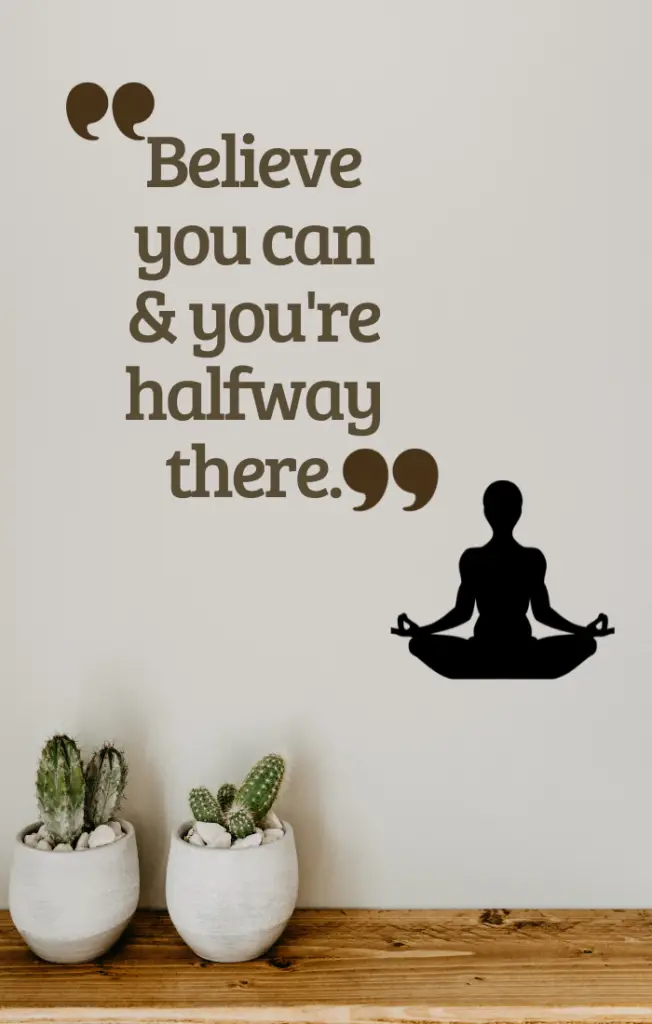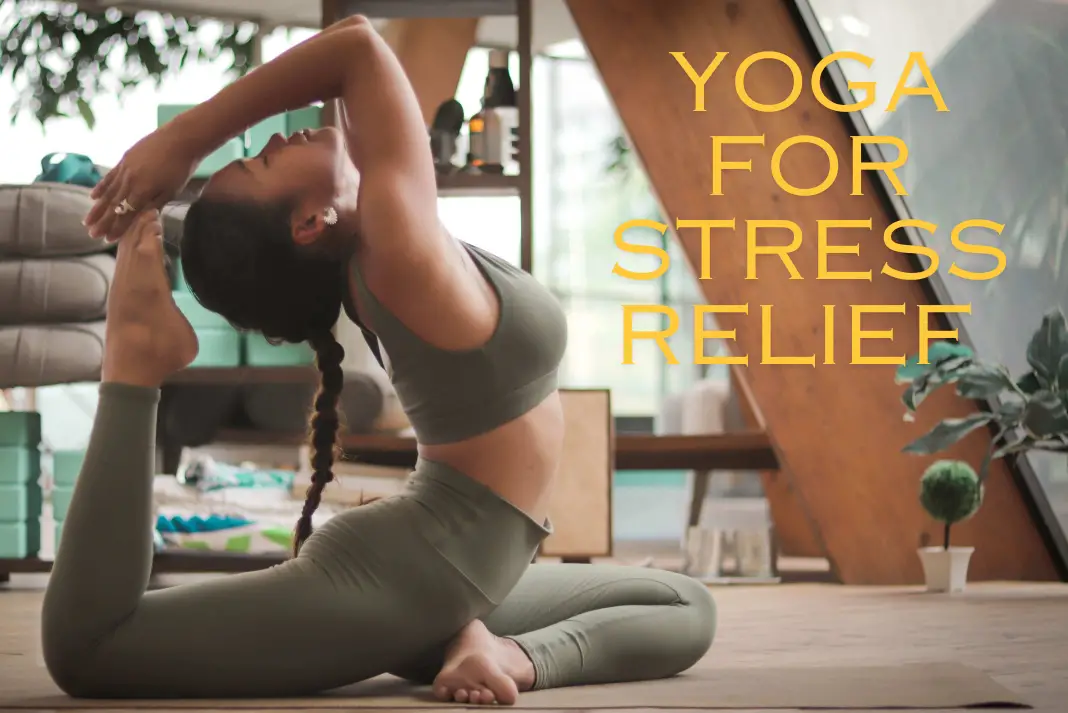In today’s busy world, stress is a common problem for every human. The constant demands of work, family, daily responsibilities, and life overall cause a lot of stress or depression in working for life. Fortunately, there is a way to calm your stress and mental well-being and it is yoga. Yoga for stress relief is highly recommendable.
In this article, we’ll explore how yoga can be an effective method for managing stress and promoting inner peace. Whether you’re a seasoned yogi or new to the practice, discover the ways in which yoga can help alleviate stress and foster a sense of tranquility.
Table of Contents
Understanding Stress
Stress is akin to your body’s innate response to situations requiring your focus or response. It may manifest diversely, such as accelerating your heart rate, tensing your muscles, or inducing sensations of anxiety or edginess. While a degree of stress can be motivating, enhancing your performance, excessive and persistent stress can detrimentally impact your physical and mental well-being. Grasping the nuances of stress is pivotal for its efficient management and the preservation of your comprehensive health.
The Science Behind Yoga and Stress Reduction
The science behind yoga and stress reduction reveals the profound impact of this ancient practice on our well-being. Yoga helps lower stress hormones like cortisol and influences the nervous system, activating the “rest and digest” response to counter the effects of chronic stress. Mindfulness, emotional regulation, and positive brain changes are also part of the package.
Physical benefits, improved sleep quality, and the social support offered in group settings make yoga a holistic approach to managing stress. By understanding the scientific mechanisms at play, individuals can tap into the power of yoga to find greater balance and inner calm in the face of life’s stresses.
Types of Yoga for Stress Relief
There are several types of yoga that can be particularly effective for stress relief. Here are some popular ones:
Hatha Yoga:
This gentle and beginner-friendly yoga style focuses on basic postures and breathing techniques. It’s excellent for stress reduction and building a foundation in yoga practice.
Vinyasa Yoga:
Vinyasa, or “flow” yoga, synchronizes movement with breath. It offers an active and dynamic practice that can help you let go of stress and promote mindfulness.
Yin Yoga:
Yin yoga involves holding poses for extended periods, which targets the connective tissues and encourages deep relaxation. It’s perfect for releasing tension and stress from the body.
Restorative Yoga:
This yoga style uses props like bolsters and blankets to support the body in passive poses. It’s all about relaxation and stress reduction, making it a great choice for winding down.
Kundalini Yoga:
Kundalini yoga combines postures, breathing, and meditation techniques. It aims to awaken energy in the spine and promote spiritual awareness, which can help alleviate stress.
Iyengar Yoga:
Iyengar yoga focuses on precision and alignment in poses. It’s excellent for building strength and flexibility while reducing stress through attention to detail.
Bikram Yoga:
Bikram, or hot yoga, involves a series of 26 challenging poses practiced in a room heated to a high temperature. This style can help with stress relief as it promotes detoxification and mental focus.

Ashtanga Yoga:
Ashtanga is a rigorous and fast-paced style that follows a specific sequence of postures and is similar to vinyasa yoga. It’s ideal for those who want an active practice to release stress.
Power Yoga:
Power yoga is a dynamic, fitness-based approach to vinyasa-style yoga. It’s physically demanding and can help reduce stress through intense workouts and mental focus.
Aerial Yoga:
Aerial yoga incorporates silk hammocks to support and elevate the body in various poses. It’s a fun and unique way to relieve stress while improving flexibility and strength.
These various types of yoga provide options for individuals with different preferences and needs, making it accessible for anyone looking to incorporate yoga into their stress relief routine.
Yoga Poses for Stress Relief
Yoga poses can be powerful tools for stress relief, promoting relaxation, and calming the mind. Here are some yoga poses that are particularly effective in reducing stress:
Child’s Pose (Balasana):
This resting pose helps relax the back and calm the mind. Kneel on the floor, sit on your heels, and extend your upper body forward, reaching your arms out in front of you.
Cat-Cow Pose (Marjaryasana-Bitilasana):
This gentle flow between arching and rounding your back helps release tension. Start on your hands and knees, inhale as you arch your back (Cow Pose), and exhale as you round it (Cat Pose).
Downward-Facing Dog (Adho Mukha Svanasana):
This pose stretches the entire body, including the back, and can help relieve stress. Start on your hands and knees, then lift your hips and straighten your legs to form an inverted V shape.
Seated Forward Bend (Paschimottanasana):
Stretching your spine and hamstrings in this seated pose can promote relaxation. Sit with your legs extended, and reach for your toes or ankles.
Bridge Pose (Setu Bandha Sarvangasana):
This backbend can alleviate stress by opening the chest and releasing tension in the spine. Lie on your back, bend your knees, and lift your hips off the ground.
Legs Up the Wall (Viparita Karani):
This restorative pose is excellent for reducing stress and promoting relaxation. Lie on your back with your legs extended up the wall.
Corpse Pose (Savasana):
The ultimate relaxation pose, it involves lying flat on your back, arms at your sides, and focusing on deep, mindful breathing.
Happy Baby Pose (Ananda Balasana):
This playful pose can help release tension and bring a sense of ease. Lie on your back, grab your feet, and gently rock from side to side.
Tree Pose (Vrikshasana):
Balancing poses like Tree Pose can calm the mind by focusing attention and promoting stability. Stand on one leg and place the sole of the other foot on your inner thigh or calf.
Lotus Pose (Padmasana):
A classic seated meditation pose that encourages stillness and inner peace. Sit with your legs crossed and place each foot on the opposite thigh.
Practicing these yoga poses regularly can be an effective way to manage and reduce stress, promoting overall well-being and a sense of inner calm.

Creating a Stress-Relief Routine
Creating a stress-relief routine is a powerful way to manage and reduce stress, promoting overall well-being and inner calm. Here are steps to help you establish an effective stress-relief routine:
Identify Stressors: Begin by recognizing the specific stressors in your life. Whether it’s work, personal relationships, or other factors, understanding what causes your stress is the first step to managing it.
Choose Stress-Relief Activities: Select activities that help you relax and alleviate stress. These can include yoga, meditation, deep breathing exercises, or hobbies you enjoy.
Set Realistic Goals: Establish achievable goals for your stress-relief routine. This could involve the frequency of your stress-relief activities, their duration, or specific targets related to your well-being.
Create a Schedule: Dedicate regular time slots to your stress-relief activities. Consistency is key, so commit to your routine and make it a part of your daily or weekly schedule.
Variety Matters: To prevent boredom and ensure your routine remains effective, incorporate a variety of stress-relief activities. This can engage different muscle groups and provide mental stimulation.
Mind-Body Practices: Consider including mind-body practices such as yoga or tai chi, which promote relaxation and mindfulness while enhancing physical health.
Breathing Exercises: Integrate deep breathing exercises into your routine. Controlled, deep breaths can help calm your nervous system and reduce stress.
Monitor Progress: Keep a journal or use fitness apps to track your progress. Seeing improvements in your stress levels can be motivating.
Rest and Recovery: Ensure that you allow your body and mind time to rest and recover. Overtraining or overexerting yourself can lead to more stress, so balance your activities with adequate rest.
By following these steps and maintaining your stress-relief routine, you can effectively manage stress and enjoy a happier, calmer life.
Yoga and the Mind-Body Connection
Yoga is more than a physical workout; it’s a profound practice that cultivates the vital mind-body connection. This ancient discipline combines physical postures, controlled breathing, and meditation, aiming to harmonize both mental and physical aspects. The core principle behind yoga is that the mind and body are intrinsically linked, and by nurturing this connection, individuals can achieve balance, inner peace, and improved health.
A key element of this mind-body relationship in yoga is controlled breathing, known as pranayama. This practice focuses on the breath to calm the mind, reduce stress, and increase body awareness. Additionally, yoga incorporates meditation, enhancing concentration and self-awareness while promoting emotional balance. The synergy of yoga’s mind-body connection extends to daily life, encouraging healthier choices and emotional resilience. Yoga serves as a potent route to inner peace and a harmonious connection between body and mind.
Seeking Professional Guidance
Seeking professional guidance is a crucial move in effectively managing stress. When stress starts to feel overwhelming or unrelenting, turning to a mental health professional can be a significant source of support and tools to handle these challenges. Therapists, counselors, and psychologists are experts in helping individuals understand and manage stress, digging deep into its underlying causes and crafting coping strategies that work for you. They may draw from various therapeutic techniques, like cognitive-behavioral therapy (CBT) or mindfulness-based methods, all tailored to your specific needs.
Seeking professional guidance provides a private and secure space to delve into your stress-related worries, offering valuable insights and solutions for a more balanced and healthier life. Don’t hesitate to reach out for professional help when stress starts impacting your well-being; it can be a pivotal step in regaining control and discovering inner peace.
Conclusion
Stress is your body’s natural response to situations that require attention or action. It can manifest in various ways, from a racing heart to anxiety. While some stress can be motivating, excessive stress can harm your physical and mental health. Understanding stress is crucial for effective management. Yoga’s profound impact on stress reduction includes lowering stress hormones, improving sleep, and enhancing overall well-being. There are different types of yoga to suit various preferences, from gentle Hatha to dynamic Vinyasa. Specific poses like Child’s Pose and Downward-Facing Dog can promote relaxation and mental calm.
Establishing a stress-relief routine involves identifying stressors, choosing activities like yoga and meditation, setting achievable goals, and maintaining a consistent schedule. Yoga enhances the mind-body connection, combining postures, controlled breathing, and meditation. It encourages inner peace, healthier choices, and resilience.
Seeking professional guidance from therapists or counselors is an essential step in stress management. Therapists help individuals understand and manage stress, offering tailored strategies such as cognitive-behavioral therapy. In conclusion, yoga can be your path to inner calm amid life’s chaos, fostering a more balanced and fulfilling life.



